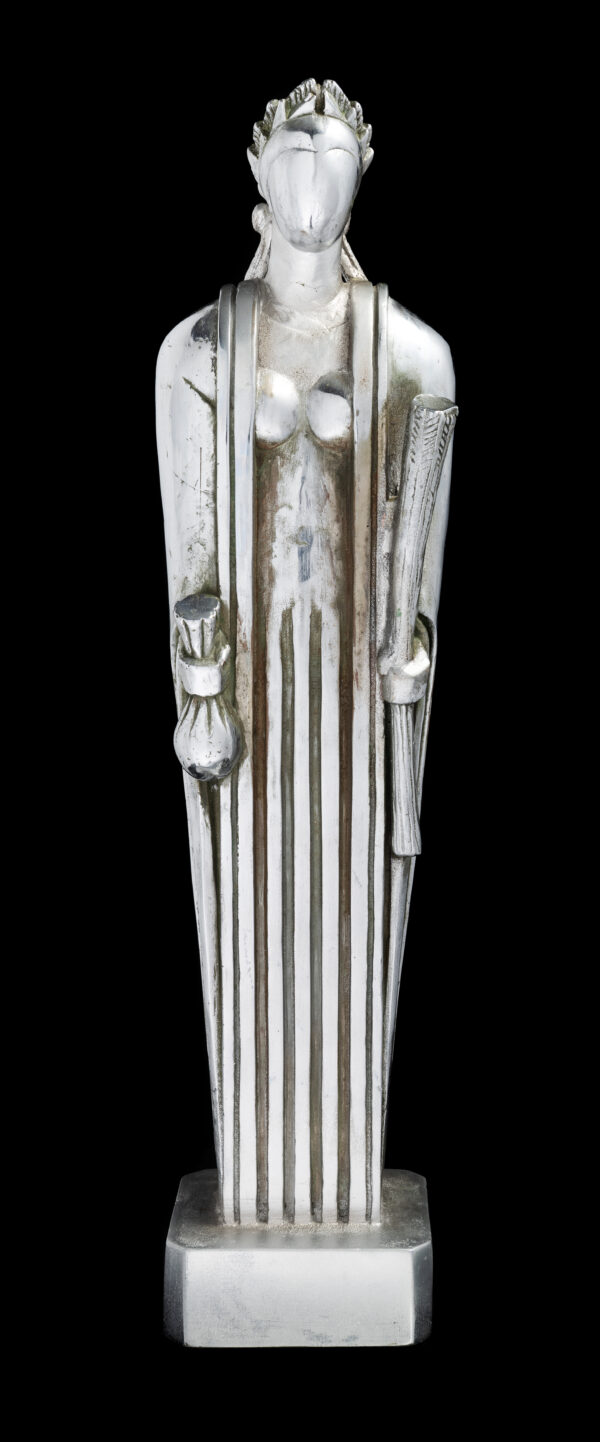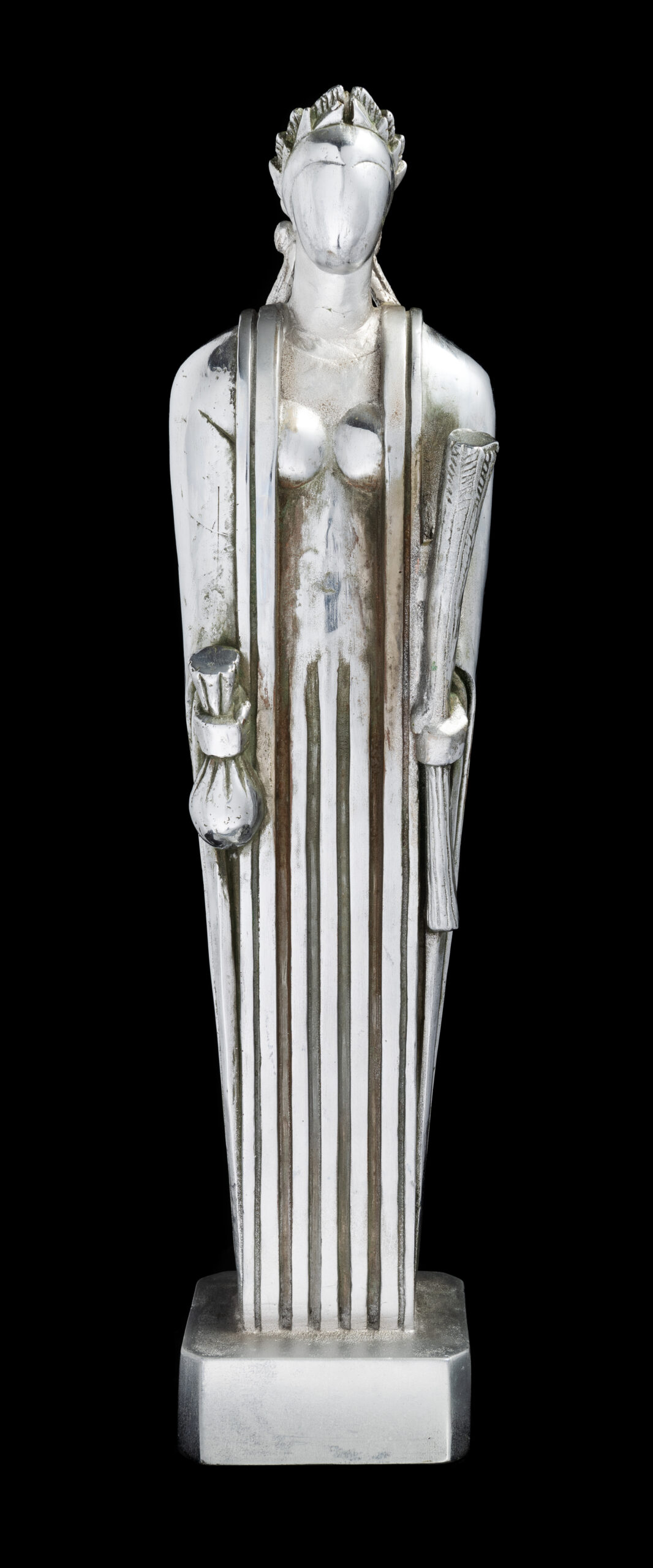
Ceres
Storrs, John Henry Bradley
about 1928
Artwork Information
-
Title:
Ceres
-
Artist:
Storrs, John Henry Bradley
-
Artist Bio:
American, 1885–1956
-
Date:
about 1928
-
Medium:
Cast terracotta, nickel-plated
-
Dimensions:
20 1/4 x 4 3/4 x 3 7/8 inches
-
Credit Line:
Wichita Art Museum, Museum purchase, Friends of the Wichita Art Museum
-
Object Number:
1987.7
-
Display:
Not Currently on Display
About the Artwork
Although John Storrs spent more of his life in Europe than in America, he is recognized today as one of America’s most distinguished sculptors of the period from the close of World War I until the beginning of World War II. During that period of two decades, much of the sculpture produced was closely associated with architectural projects and certainly one of Storrs’ best-known works was the 31-foot-high aluminum figure of Ceres commissioned as a finial for the Board of Trade Building in Chicago. That building was completed in 1929 by the well-known architectural firm of Holabird & Root, but the Ceres sculpture was not installed until 1930. In the process of producing the large-scale Ceres figure, Storrs executed numerous small models, one of which, seen here, is a 21-inch-high piece constructed of nickel-plated terracotta.
The work depicts the ancient agricultural goddess, Ceres, who symbolized the generative powers of nature and thus complements the grain market function of the Board of Trade. And stylistically, the work epitomizes Art Deco, one of the dominant aesthetic movements of the period, and is certainly Storrs’ most significant Art Deco creation. The figure is tall and slender and stands erect. Facial features are lacking altogether. Shoulders are wide and curved but the body form tapers downwards and is fully draped. The arms are held tightly against a rigid and totally motionless body, no portion of which is revealed except the breasts and the stylized hands. What is most particularly evident are the long parallel drapery folds clearly reminiscent of the flutings of a classical architectural column. Indeed, the entire figure is geometrically conceptualized in rigid symmetrical terms but for the two slightly outstretched hands, one holding a sheaf of wheat bearing a zig-zag surface pattern, the other a bag of sample grain.
Stylistically, these aspects are highly significant and clearly reflect the aesthetic outlook of the period for the work is fully streamlined and is clearly indicative of the period’s interest in elegance, machine precision and gleaming and polished surfaces. Streamlining is expressed through the interplay of straight lines and definite curves throughout the composition of the figure. And, as a design concept, streamlining was of course introduced for the purpose of increasing ease of motion and eliminating resistance to speed, yet as the Art Deco period proceeded such streamlining became more an aesthetic consideration than a functional one. Certainly, it found expression both in painting and in the sculpture of the period and, more particularly, in the decorative arts from which the term “Deco” itself derives. However, although the Art Deco movement reached its height during the period between the two wars, with the close of World War II the style went out of fashion and only recently has experienced a considerable revival.
John Storrs was born in Chicago in 1885. He attended the Chicago University High School. In 1913, he began serious study in sculpture under Rodin in France and, in 1914, married Marguerite Chabrol in Orleans, France, where four years later his only child, Monique, was born. It was in 1929, as we have seen, that he executed the Ceres for the Board of Trade Building, and in 1932 and 1933, was commissioned to execute a number of sculptures, both in the round and in relief, for the Century of Progress Exhibition at the Chicago World’s Fair. Storrs spent most of the remainder of his life in Orleans, France, and made his final trip to the United States in 1939. He presented numerous exhibitions throughout the Loire Valley during the 1940s and early 1950s and died at Chateau de Chantecaille in 1956 at seventy-one.
